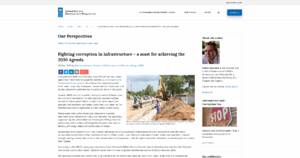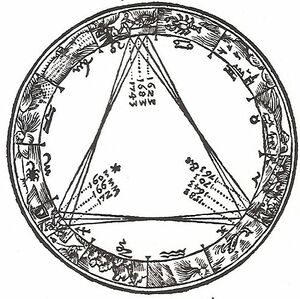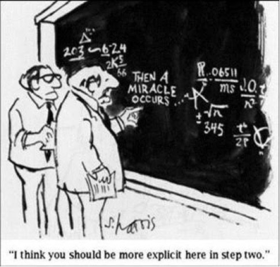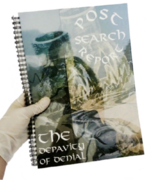User:Claxhanson/Projectproposal: Difference between revisions
Claxhanson (talk | contribs) |
Claxhanson (talk | contribs) |
||
| Line 22: | Line 22: | ||
'''If''' their is a shift in the way the quest for power manifests itself, what are the patterns that we can analyse in order to prevent this spread of authoritarian and centralized powers undermining the possibility of justice and equality ? How could we translate and apply patterns of resistance, like self organization, to potentially new, scarce, digital spaces or ressources, see how this might merge into new forms of organization. | '''If''' their is a shift in the way the quest for power manifests itself, what are the patterns that we can analyse in order to prevent this spread of authoritarian and centralized powers undermining the possibility of justice and equality ? How could we translate and apply patterns of resistance, like self organization, to potentially new, scarce, digital spaces or ressources, see how this might merge into new forms of organization. | ||
<span style="color:blue;">"When we decide to approach architecture as 'the discipline that organizes bodies in space', countless texts can be commissioned and written about how architecture materializes various forms of political violence. Yet, it is much harder to articulate a tactical ‘positive’ discourse about political architectures as we propose to do throughout this issue."</span> | <span style="color:blue;">"When we decide to approach architecture as 'the discipline that organizes bodies in space', countless texts can be commissioned and written about how architecture materializes various forms of political violence. Yet, it is much harder to articulate a tactical ‘positive’ discourse about political architectures as we propose to do throughout this issue."</span><br> | ||
The Funambulist Nº23 - Insurgent Architectures | The Funambulist Nº23 - Insurgent Architectures | ||
Revision as of 02:49, 3 December 2020
CONTEXT
SHIFT OF POWER
There’s this cycle of Jupiter and Saturn.
They come together every 20 years, roughly, and it is called the Grand conjuct.
According to it’s astrological meaning it is cyclical conjunction and is a marker of historical eras in traditional astrology. When Jupiter and Saturn come together there is both the intensity of old forms dying and a new growth taking shape.
Since 1802, Jupiter and Saturn have been aligning in earth signs, and this year, in 2020, Jupiter and Saturn will align in the air sign of Aquarius. It’s a new cycle that will last until 2159 ! Also known as the great Upheaval, this conjunction is extra special because it marks the start of a new roughly 200-year cycle during which Jupiter and Saturn will form conjunctions in the same element: air.
In 1980, we got a glimpse of it, when they briefly conjunct in Libra, the beginning of the internet revolution, of information technology revolution, if you like. But it really gets moving at the end of 2020. That’s a very significant point.
Any way this means that these planets that have been ruled by earth up until now (oil extraction, heavy machinery, earth industries) have just shifted into the air sign of Aquarius, the sign of progress, innovation, and community. That means that the extractive forces that have been focusing on earth for the past 200 years will now re-orient their interests (the strive towerds more and more data, more controle over communication ressources).
RELATION TO LARGER CONTEXT
THE DISSOLUTION OF ARCHITECTURE
Over the summer I have been obsessed with the Funambulist Magazine, but I was also reading Yona Friedmann - "Architecture of survival" and "Utopies réalisables", in which he explores the ideas of "architecture of survival" as the opposite of "the survival of architecture", in the sens that master creators will never truly answer the needs of the people as much as systems of self-organisation may do. He suggests an approach to architecture where architects would only be consultants supporting collectively determined projects.
"Who has the right to decide, and the power of agency over architecture?
How to ensure this right to those to whom it belongs?
How to do it in a world that is heading towards increasing poverty?
How to survive in such a world?"
If their is a shift in the way the quest for power manifests itself, what are the patterns that we can analyse in order to prevent this spread of authoritarian and centralized powers undermining the possibility of justice and equality ? How could we translate and apply patterns of resistance, like self organization, to potentially new, scarce, digital spaces or ressources, see how this might merge into new forms of organization.
"When we decide to approach architecture as 'the discipline that organizes bodies in space', countless texts can be commissioned and written about how architecture materializes various forms of political violence. Yet, it is much harder to articulate a tactical ‘positive’ discourse about political architectures as we propose to do throughout this issue."
The Funambulist Nº23 - Insurgent Architectures
Recently I have found this project, which I realized they were aiming for the same methodology but the other way round : looking into free software and open source cultures to find new answers in urban infrastructures.
ON THE DELUSION THAT TECHNICAL WORK IS MORALLY NEUTRAL
There are people -very well educated people- designing our schools, our communication systems, our social media plateforms… There are also people designing the prisons, there are people drawing maps, drawing borders… there were people desiging the extermination camps.
The original drive for both my project and my thesis was to explore the idea of the "impossibility of innoncence" of the architect, the master creator : the delusion that technical work is morally neutral, in the hopes of understanding how different forms of power have been sustaining their dominion by appropriating and corrupting infrastructures to their advantage.
The "cognitivists", the "experts", the "technocrats".
WHO ARE THESE GHOSTS THAT ARE STALKING OUR SYSTEMS ?
"Urban infrastructure is a gear of political power. Its aim is to conquer the territory of the city and hold dominion over certain city relationships. Public space is more than just a polygon delineated by coordinates, it is a factory of social realities."
- Ximena Peredo in "Infrastructure & Corruption", a photo project by Alejandro Cartajena
I guess the starting point for this research was the idea that architectures and infrastructures can be corrupted to support and cement certain ideologies. Even though ideologies can be criticized, and political regimes can be overthrown and disowned, it always leaves behind some kind of heritage, some ways of thinking and feeling, some good old habits, some obscure and abstruse drives.
In The Funambulist : "ARCHITECTURE AND COLONIALISM", they state these two arguments : "colonialism is not an era, it is a system of military/police, legal, administrative, social, and cultural system of domination; and, architecture is not (only) an aesthetic vessel, it is an apparatus organizing and hierarchizing bodies in space"
With this project I hope to somehow contribute, in embeding the discussion around media and information theory within the context of the imperial and colonial heritage of its infrastructures. I would like to participate in this research by using the insurgent narrative of this shift of power to engage in a process of investigation, through cross examination and juxtaposition, of the varied pervasive methods that have been used on land. Look for analogies, similarities, and translations that could be happenning in our more intangible (soft) networks.
WHAT DO YOU WANT TO MAKE?

Recognizing the patterns is the first step to healing.
THE INSTITUTION OF CARE FOR CORRUPTED INFRASTRUCTURES (OR SOMETHING LIKE THAT)
The battle over the Internet infrastructure is often attested by actual events like the Internet Roundtable for Emerging Countries in Beijing 2012, the World Conference on International Telecom in Dubai in 2012, or the NetMundial in Sao Paulo 2014. I would like to set up, through some kind of fictive simulation, the website of some institution taking part in these meetings (a fantasy of mine).
This website would be an aggregation of the studies and practices of the institution for care of corrupted infrastructure, that aims at articulating the ways in which some tactical discourses about political architectures could be translated, or applied into the digital arena, where the needs to materialize resistance against imperialism, border enforcement, capitalism, patriarchy, and/or neoliberal forces, are just as urgent.
This institution will be investigating concepts like deterritorialisation - privatization - delimitation of spaces - masterplanning - through a multidisciplinary approach, to prove that we are constantly subordended by power forces trying to imisse themselves constantly in our life through infrastructures.
What kind of wider strategies are taking shape in the infinite quest for power? The institution’s goal is to establish a clear understanding of the relationships of dominance, through logics/systems of division and exclusion, and compare the ways in which they develop throughout different economical and cultural sectors, in order to prevent them.
The first interface you meet would look like your typical UN website against corruption. I might even try to make it a bit more crafty : http://www.corruptioncontrol.com/Types_of_Corruption.html
Depending on how prototyping goes, I see the project being a sort of mash up of different modules, files, text based stories. I see this website being a support for several smaller modules that could be open and interacted with. Each module would carry a part of the narrative, and the story-telling would be done through the interaction with them.
I want the person arriving on it to feel like they have to engage with it in order to make sens of it, like they have just entered a world they have yet to understand (http://www.fraternityofshadows.com/wiki/The_Grand_Conjunction), depicting some kind Kafkaesk involment with secrecy orders and litigation : a text based adventure through the institution’s research and documents. As you dig a bit through the, I want the feeling of having crossed some certain boundaries between what "should" be considered sharable, and what is actually shared through this page that you have just fallen upon. You realise you have access to the whole reserach process of this collective. This will happen through different modules.
Not particularly for the esthetic, but for the shape of being able to open files and interact with different modules, I was shown this : https://www.windows93.net/
MODULES
THE ASTERN OPERATOR
"Corruption is not one phenomenon, but many different sorts of abuse, minor and major, all aggregated together. Disaggregation between the different types of corruption is essential in order to tailor the reform measures to the specific problem. In CurbingCorruption we advocate two-levels of disaggregation: First by Sector, second by specific corruption type." https://curbingcorruption.com/corruption-types/
The first module is a research tool, a naked bare structure that will allow for the dissection of what might be considered corruption, as in abuse of power for private gain, in the infrastructural system, meaning on a systemic level. It was built for both prevention and detection of these occurrences.
On a longer term, this module will form an archive of deeply rooted mecanics that allow for the corruption of our infrastructures.
This formation of nodes, aggregations, clogs, and all sorts of linking systems that will allow for an almost infinetely expandable research tool, and will propose an alternate trajectory to reading, a non-liner reading paths for the archive.
I will use this module to outline my thesis. When each quesited project is stored and analysed through the module, if the magic works, the different nodes should be easily reorganized to form a coherent thesis in three chapters (see thesis outline).
It will be accompagnied by a finding aid that will explain how to navigate it : https://dictionary.archivists.org/entry/finding-aid.html
https://www.cameronsworld.net/
MY CONTRIBUTION TO THE E-DEATH INDUSTRY
The second module would be some sort of pop-up window which would open up a chatbot. By talking to it (and eventually going through a "read me" file, you understand that this bot is building up an AI, trying to use astrology to make an immortal version of you. At this point in the narrative I’m hoping the person going through the website starts feeling perplex about the intentions of this collective.
The rest of the story and modules is to come (see near future).
HOW DO YOU PLAN ON MAKING IT ?
WHY DO YOU WANT TO MAKE IT ?
ON THE DELUSION THAT TECHNICAL WORK IS MORALLY NEUTRAL
There are people -very well educated people- designing our schools, our communication systems, our social media plateforms… There are also people designing the prisons, there are people drawing maps, drawing borders… there are people desiging the extermination camps.
The original drive for both my project and my thesis was to explore the idea of the "impossibility of innoncence" of the architect, the master creator, the delusion that technical work is morally neutral, in the hopes of understanding how different forms of power have been sustaining their dominion by appropriating and corrupting infrastructures to their advantage.
the "cognitivists", the "experts", the "technocrats".
WHO ARE THESE GHOSTS THAT ARE STALKING OUR SYSTEMS ?
I guess the starting point for this research was the idea that architectures and infrastructures can be corrupted to support and cement certain ideologies. Even though ideologies can be criticized, and political regimes can be overthrown and disowned, it always leaves behind some kind of heritage, some ways of thinking and feeling, some good old habits, some obscure and abstruse drives.
In The Funambulist : "ARCHITECTURE AND COLONIALISM", they state these two arguments : "colonialism is not an era, it is a system of military/police, legal, administrative, social, and cultural system of domination; and, architecture is not (only) an aesthetic vessel, it is an apparatus organizing and hierarchizing bodies in space"
With this project I hope to somehow contribute, righfully I hope, in embeding the discussion around media and information theory within the context of the imperial and colonial heritage of its infrastructures. I would like to participate in this research by using the insurgent narrative of this shift of power to engage in a process of investigation, through cross examination and juxtaposition, of the varied pervasive methods that have been used on land, and look for analogies, similarities, and translations that could be happenning in our more intangible (soft) networks.
WHAT IS YOU TIME TABLE
- End of november, mid december, I will have finished my first module for the project : "My contribution to the e-death industry". Technically this means that the Astrology chatbot I’ve been working on (at my own little pace) for the past 2 months needs to be up and running.
- End of november, mid december, too, I will have commited to my system and will have clearly defined the nodes that will constitute my research project (see thesis proposal), I will have observed if there are (and there will be) swelling points in each of my research unit. Then I will take a bit of time to focus on writting the first chapter, but from the 4th of december on, I will have all the material needed to support my prototyping practice : Case studies, swelling points, diagnisis.
- By January, I will have started the conception of a second module for the project of the a second research unit.
- By Febuary, as I will be hands on prototyping the structure for the plateforme and I will be embeding some of the modules in it already. I expect that I will have at least 5 research units either a finished or at least 70% into the process (40% at worst)
- Mid-febuary, as I conclude the first draft of the thesis, I will start carry on perfecting the plateforme structure and the last modules (By then there will have been massive amount of thinking about it done).
- April should be all done just perfecting everything (would rather have some margin for that)
WHO CAN HELP YOU AND HOW ?
everybody can help everybody can help everybody can help everybody can help everybody Manetta can help everybody can help everybody Micheal with prototyping can help everybody Clara & Amy can help everybody can help everybody can help my friends here everybody can help everybody can help everybody can help everybody can help anyone new I meet that stays at 1.5 m everybody can help everybody can help everybody can help my friends back home everybody can help everybody can help everybody can help Marloes everybody can help everybody can help everybody can help everybody can help everybody can help everybody can help everybody can help everybody can help everybody can help everybody can help
RECENT PAST
https://www.youtube.com/watch?v=S6rq_GT6RIk
As I came in to this Master program, my major focus were Myth-Science and Science Fiction. I was singing the song of Outer Space incorporation at least six tmes a day and I was reading "La Horde du Contre Vent" by Alain Damasio. My ideas were mostly revolving around "Myth-science" that I understood as fiction works that produced alternative perspectives and models to revealing "the habits of thought of the physical, historical and social realities as yet more myth".
The central project was a story which was also the work of a collective called the "Metatown Spirit committee". Now that I look back on it, actually, I was spending most of my time trying to fabricate fake legal document (post search reports, transcrits from official conversations that never happened, a Fake Writt or Cert.)
During SP #12, Radio implicancies, I was working on the "MYTH, MYTHODOLOGY, MYTHOD" with Ioana and Tisa, where we investigated, for 3 weeks, the different ways in which we could fiction as a method to convey messages. The "Insecurity Hotline", for example, "the hotline where we turn insecurities into securities", was a fictive phone service that you could call all day, any day, so that together, we would "reshape a community for you to fit in." This framework allowed us to tackled subjects like memory loss, individual identity, or even the impostor syndrome, in a playful yet compasionate way.
Two other works I have done for the Radio Implicancy project were called "Democracy (60 Hz Gamma Waves for faster learning)" and "Public Damage N2992". Both of them were already a first step in trying to identify (in a playful yet critical way) the eventual points of corruption within our systems. The first one, a read out thread about how the incarceration system in the USA is corrupting Democracy, and in the second one, how the abusive french police system is being supported by an increasingly authoritative and censoring governement. (Both of them can be listened to on our station : https://issue.xpub.nl/12/ )
I might re-use the case of "Louis XV will save us all" as well, to explore the dynamics of communication powers under the King Louis XV. Not that it really needs to be proved to anywone that communication systems under the 18th century monarchy was pretty corrupted, the idea is to explore an incredibly wide range of case studies in order to define what an infrastructure of corruption really is, and what it has been throughout history.
Some of the earlier works from last year also resonate with this project, and more particularly the work I had started during SP #11, Post digital Itch, where I embarked in the journey of "recongnizing patterns". With the rich archive I had at hand, I had started to delineate the different ways in which dictatures form. What are the swelling points, how can we define and observe the rise and fall of a dictature, of an any other abusive form of power. This work was never published, or shared, but I will be using it to form some of my arguments throughout this project.



